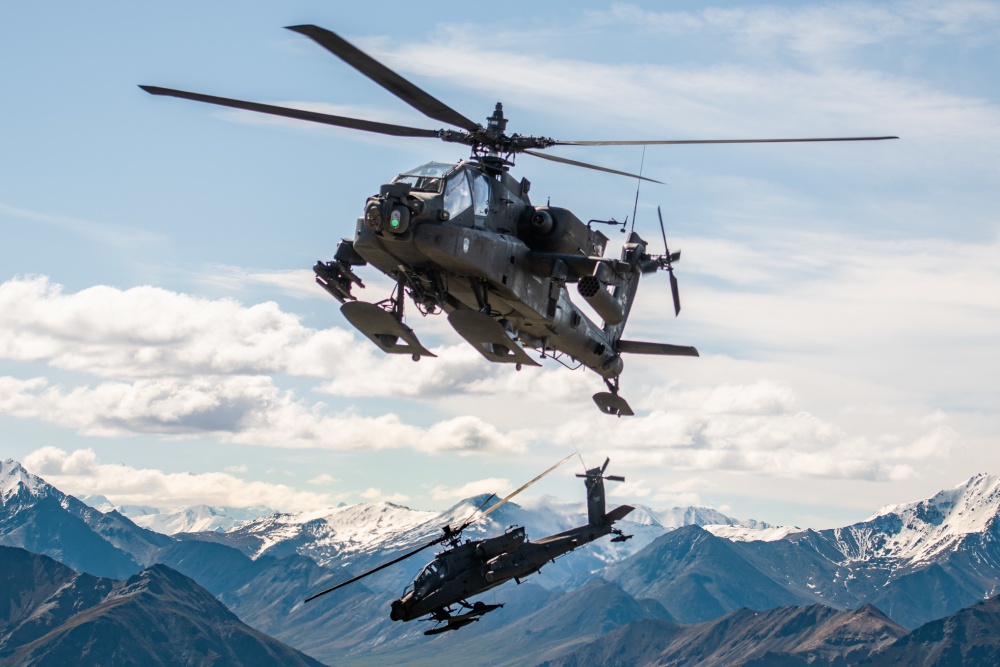
Sea state
Two Canadian warships passed through the Taiwan Strait last week. During the transit, Canada alleges that two Chinese Su-30 fighter jets made a low pass within 300 metres of one of the vessels. Canada’s defence ministry says the warships were enforcing United Nations sanctions on North Korea. Diplomatic relations between Beijing and Ottawa have been tense since Canada arrested senior Huawei executive Meng Wanzhou in December at the request of the US.
A British-led joint expeditionary force is taking part in a defence exercise in Lithuania. Operation Baltic Protector marks the largest Royal Navy presence in the Baltic Sea in more than a century and involves 4,000 personnel and 44 ships from Britain and Lithuania, as well as Denmark, Estonia, Latvia, the Netherlands, Norway, Finland and Sweden. Baltic Protector is intended as a show of solidarity and comes after Russian President Vladimir Putin declared that Western liberalism was ‘obsolete’ and had outlived its purpose.
Russian destroyer Admiral Gorshkov arrived in Havana Bay, Cuba, last week on its round-the-world tour. The warship is supported by the multipurpose logistics vessel, Elbrus, the tanker Kama, and the rescue tug Nikolai Chiker, and will make port calls across the Caribbean. The US military has deployed maritime assets and mounted air operations to track the flotilla’s movements.
Flight path
Two German Eurofighter Typhoons taking part in an air combat exercise over the country’s northeast collided last week, killing one pilot. Pilot error is thought to have been the cause of the crash. The incident has dealt another blow to Germany’s overall air combat readiness and capability. Last year, it was revealed that due to technical problems with wing pod sensors, only four of Germany’s 128 Eurofighter jets were combat-ready.
The US Air Force has redeployed 12 F-22 Raptor stealth jets to the Persian Gulf region. Nine of the jets reportedly arrived at Al Udeid Air Base in Qatar and three others were delayed at Moron Air Base in Spain by technical issues. It’s unclear if this signals another build-up of US forces in the region or if the jets are intended to replace F-15Cs that have been based in Qatar since October last year.
India’s Tribune newspaper reports that the Indian Air Force’s first AH-64E Apache attack helicopters will be based at Pathankot Air Force Station, close to Jammu and Kashmir. India signed a contract for 22 of the helicopters with the US in 2015 and received its first in May. The Apache is also the first US-made attack helicopters to be used by India. The Indian Air Force currently uses Russian Mi-24 and Mi-35 helicopters.
Rapid fire
The United States Army’s 82nd Airborne Division will test pocket-sized drones for the first time during its upcoming deployment in Afghanistan. The Black Hornet drones, ordered earlier this year, are designed to help soldiers scan a region without using ground-based sensors or aerial surveillance. The data sent between the drone and the controller are encrypted to protect against hacking. If the test goes well the drones are set to become part of a soldier’s standard gear.
Papua New Guinea’s army has been deployed to assist thousands of people displaced by the eruption of Mount Ulawun, which has been active since 26 June. A second volcano, Mount Manam, erupted on 28 June. A state of emergency has been declared as between 7,000 and 13,000 people are believed to have been displaced. The response has been complicated by the closure of the region’s main airport.
US Army officials are using Europe’s heatwave to push for new air conditioning policies at their installations in Germany. Current policies limit the use of air conditioning in base offices and homes, but increasingly hot summers are affecting soldiers and their families. The army has also stopped using tracer rounds on ranges to reduce the risk of fire.
Final frontier
The UN Committee on the Peaceful Uses of Outer Space has approved landmark guidelines on space sustainability. They’re intended to reduce space debris and other hazards within earth’s orbit and have been in development since 2010. Considering the rapidly increasing number of satellites, these guidelines are intended to make operating in space safer.
NATO defence ministers have approved a new space policy. In announcing the policy, Secretary-General Jens Stoltenberg focused on the importance of space-based technology for enabling modern warfare, as well as interoperability and information-sharing on space policy. He would not confirm or speculate on how NATO’s collective defence obligations would apply in space.
NASA has announced plans to send a rotorcraft to Titan, one of Saturn’s moons, in 2026. Titan will be a particularly interesting target for the spacecraft to study and conduct scientific experiments on because of its supposed semblance to the earth of billions of years ago. Scientists hope the mission will help them to better understand how life is formed in such environments. The craft is expected to land in 2034 and the mission will last just under three years.
Wired watchtower
The White House has announced that US companies will be able to sell specific items to Huawei again, but has also warned that the decision should not be seen as a general amnesty for the company. Earlier this year, the Trump administration imposed a blanket ban on trade with Huawei. White House economic advisor Larry Kudlow confirmed that the ban has not been lifted but licences to trade with Huawei may be granted to specific technology companies.
European Union member states agreed in Brussels last week to strengthen coordinated responses to cyber threats and have agreed to conduct cyber war games to take place at EU meetings in Helsinki in July and September. The war games follow a series of cyberattacks by Russia and China. Meanwhile, Germany and the Netherlands have also committed to a closer cyber relationship. They signed an agreement to build a joint military internet called ‘tactical edge networking’. The new network would merge communications between the German army’s land-based operations and the Dutch defence ministry’s tactical communications program.

